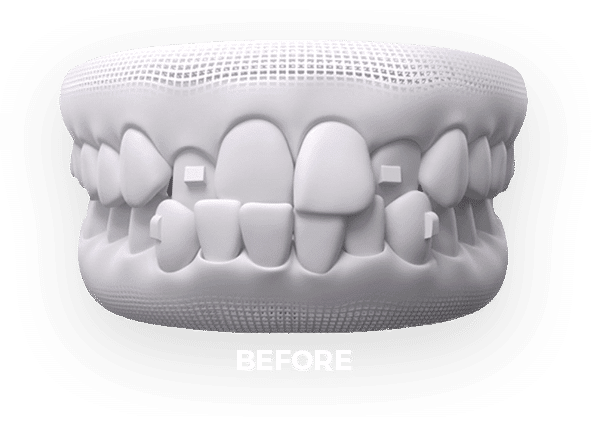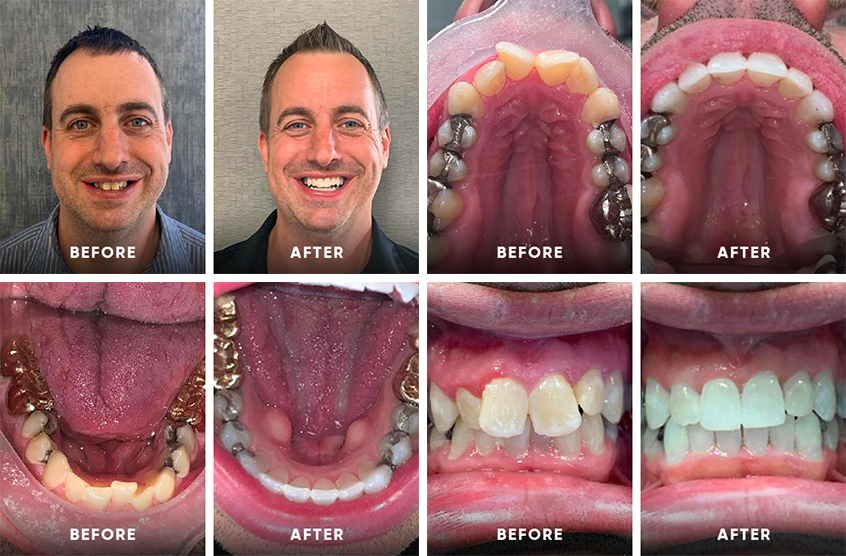Invisalign for Teenagers: A Modern Solution to Straightening Young Smiles
Invisalign for Teenagers: A Modern Solution to Straightening Young Smiles
Blog Article
Invisalign vs. Typical Braces: Which Alternative Is Right for You?
When considering orthodontic treatment, the option in between Invisalign and typical braces provides a number of important elements that warrant mindful evaluation. Invisalign provides a very discreet choice with detachable aligners, while traditional braces offer an extra noticeable yet effective option for extreme imbalance. Each alternative incorporates distinctive benefits and disadvantages connected to visual appeals, comfort, treatment duration, and expense. Comprehending these subtleties is crucial for making an informed decision that aligns with your individual preferences and way of living. The question continues to be: which choice will finest meet your orthodontic needs and expectations?
Summary of Treatment Alternatives

On the other hand, traditional dental braces consist of steel brackets and cords that are bound to the teeth. This method uses continuous stress over time to achieve placement. While efficient for intricate orthodontic problems, traditional braces call for routine check outs for changes and can pose difficulties in keeping dental health due to the problem of cleansing around cords and brackets.
Both options have their qualities, and the choice frequently rests on details dental conditions, lifestyle preferences, and individual conformity. Inevitably, consulting an orthodontic professional is essential for determining the most appropriate therapy strategy tailored to individual requirements. Comprehending the nuances of each alternative can considerably influence the total success of orthodontic treatment.
Visual Factors To Consider
A considerable element influencing the choice in between Invisalign and typical dental braces is the visual charm each therapy supplies. Invisalign aligners are crafted from clear plastic, making them basically undetectable when used. This discreet appearance is specifically attracting young adults and adults who might feel uneasy regarding their orthodontic treatment. The capability to preserve a natural smile throughout the alignment procedure can significantly improve the client's self-confidence in specialist and social settings.
In comparison, conventional braces include metal braces and cords, which can be extra visible. While developments in orthodontic innovation have actually resulted in the development of smaller brackets and colored elastics, traditional braces still preserve a more conspicuous account. For some people, the presence of dental braces may prevent them from looking for required treatment.
Inevitably, the selection in between Invisalign and standard dental braces might rest on personal choices relating to looks. People who focus on discernment typically favor Invisalign, while those that are much less concerned concerning presence may opt for typical braces. Recognizing the visual ramifications of each alternative is vital for making a notified choice that straightens with one's way of life and choices.
Comfort and Convenience

In regards to convenience, Invisalign aligners are detachable, enabling people to enjoy their favorite foods without restriction and maintain optimum dental health. Cleaning and flossing are simplified, as the aligners can be obtained during these regimens, whereas standard dental braces call for mindful maneuvering around wires and braces.
In contrast, conventional braces necessitate normal adjustments, making them less convenient for those with hectic timetables. On the whole, the comfort and ease of Invisalign make it an appealing selection for many individuals seeking orthodontic therapy.
Treatment Duration and Efficiency
While both Invisalign and standard dental braces work in dealing with oral imbalances, the duration of treatment can differ significantly between the 2 options. Normally, Invisalign therapy can take anywhere from 12 to 18 months, depending upon the complexity of the situation. The clear aligners work by progressively changing teeth into their preferred placements, and normal follow-ups with an orthodontist help guarantee development remains on the right track.
On the other hand, typical dental braces commonly require a longer commitment, normally varying from 18 months to three years. This is because of their fixed nature and making use of wires and brackets, which can be much more effective for intricate situations and severe imbalances (Invisalign). The therapy effectiveness of standard dental braces is well-documented, as they enable specific modifications and higher control over tooth movement
Eventually, the choice between Invisalign and conventional dental braces may depend upon both the anticipated treatment duration and the particular dental problems available. Consulting with an orthodontist is important, as they can supply tailored referrals based on specific demands, making certain the selected method straightens with desired outcomes and timeframes.
Expense Contrast and Insurance Policy Options
Cost plays a significant duty in the decision-making procedure for individuals thinking about orthodontic therapy, whether deciding for Invisalign or conventional dental braces. On average, the cost of Invisalign varieties from $3,000 to $8,000, while conventional dental braces typically set you back between $2,000 and $6,000. Elements affecting these expenses consist of the complexity of the instance, the duration of treatment, you can try these out and geographical area.
Insurance policy coverage can significantly influence out-of-pocket costs. Many oral insurance strategies supply partial coverage for orthodontic therapies, but the specifics can differ commonly. It is recommended you read crucial for individuals to review their insurance policy policies to establish the degree of insurance coverage for either choice. Usually, standard dental braces may be extra frequently covered by insurance policy plans contrasted to Invisalign, which some insurance companies classify as a cosmetic procedure.
Furthermore, numerous orthodontic practices provide versatile layaway plan, making both treatment alternatives much more obtainable. Patients ought to ask concerning potential funding options and discount rates for in advance repayments. Examining the complete price, consisting of insurance policy benefits and layaway plan, is vital for making an educated decision that aligns with both aesthetic preferences and budget plan considerations.

Final Thought
In recap, the option between Invisalign and conventional braces rests on several elements, including visual choices, convenience, treatment duration, and price. Invisalign supplies a very discreet, detachable choice that helps with oral health and nutritional versatility, while standard braces may be more ideal for complicated dental issues and often come with a reduced price factor. Eventually, examination with an orthodontist is vital to examine private circumstances and determine one of the most proper treatment alternative for accomplishing optimal oral positioning.
When considering orthodontic therapy, the option between Invisalign and typical braces provides several important aspects that merit mindful examination.Comparing Invisalign and typical braces discloses distinctive therapy choices for orthodontic correction.While both Invisalign and typical braces are efficient in dealing with oral misalignments, the period of treatment can differ considerably between the two choices.Cost plays a significant role in the decision-making process for people thinking about orthodontic therapy, whether deciding for Invisalign or standard dental braces.In recap, the option between Invisalign and traditional braces hinges on numerous elements, consisting of visual preferences, comfort, therapy period, and cost.
Report this page